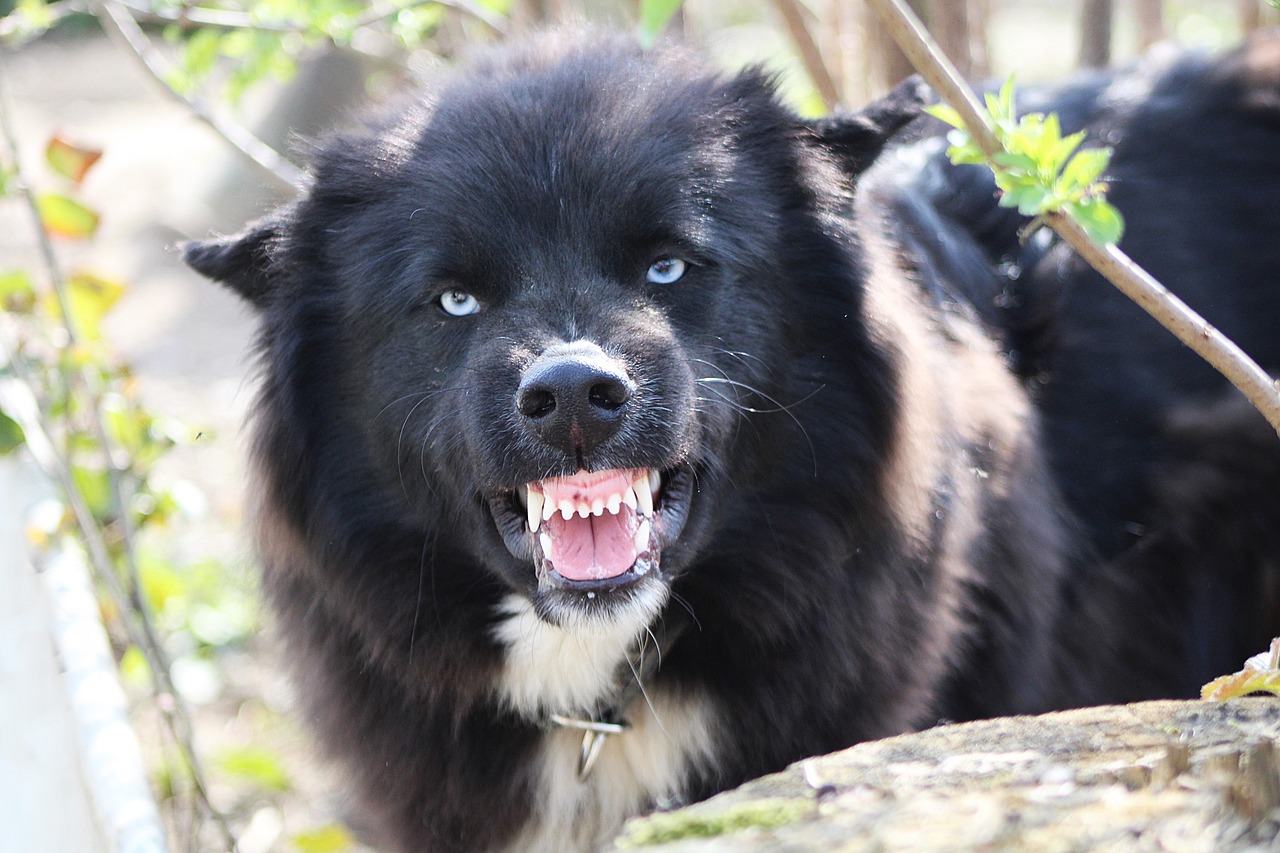If your dog is aggressive to other dogs, the cause might be:
- Excessive dominance — Some dogs are extremely dominant and don’t like sharing anything, including personal space.
- Fear — There are dogs who simply aren’t eager for canine-to-canine interaction.
- The dog breed — Certain breeds may require harsher handling.
- The dog’s background — Past trauma has been known to turn a dog very aggressive.
- A medical condition — Chronic pain will make humans more aggressive, and the same goes for dogs.
My Dog Is Aggressive to Other Dogs
As a longtime dog owner and friend, it took me a good while to notice that, no matter what I do, my dog is aggressive to other dogs.
That made no sense to me, as the poor dear was always the sweetest thing in my company.
Whenever he’d find himself in the presence of another canine, however, he would absolutely lose it.
For the longest time, I’ve been trying to sweep the whole thing under the rug. Then I started to worry.
I kept asking myself, “What if he hurts himself, or another person’s dog? Will someone end up taking him from me?”
So I’ve decided that enough was enough, and that, for better or worse, I would get to the bottom of this issue.
As it turned out after a bout of digging up information, dog-on-dog aggression is quite common. We may even call it expected.
But just because it’s expected, doesn’t mean that it’s welcome.
At some point, dog aggression can cross a line and may result in injury, a whole lot of tears, and perhaps even legal action.
And stopping that from happening is on us—their owners. But in order to stop something, first, we need to understand it.
If you’re thinking, “my dog is aggressive to other dogs and I want to know why,” keep on reading!
My Dog Is Aggressive to Other Dogs — Telltale signs
As I’ve learned, dogs start showing signs of aggression far earlier than we tend to notice.
Before the growling, snapping, or tugging of the leash, they may emote a range of different warning signs.
These warning signs can include anything from:
- Suddenly going rigid, as if the dog froze on the spot
- Tail wagging rapidly
- Showing teeth without making a sound
- Tucking its tail and acting startled or scared
- Staring with intent,
- Averting its gaze from you
- Withdrawing its lips, either slowly or rapidly
- The dog’s fur standing up on end
I paid little attention to half of these, and the other half I didn’t even know were relevant.
So, my furry friend was actually trying to tell me something, and I simply wouldn’t listen.
“I don’t like this,” he would communicate, and it was my responsibility to determine why and what this was.
It was no wonder that he’d go off the rails from time to time.
But here’s the thing: although dogs don’t speak as we do, they certainly do send messages in their own way.
And after doing some more research on what makes them tick, I’ve gotten better at understanding the meanings behind those messages.
Here’s a bit more of what I’ve learned.
My Dog Is Aggressive to Other Dogs — Why?
Now, this is where things got both more complicated, as just like we humans, dogs have personalities of their own.
Some are timid, friendlier, and overall easier to be around. Others, on the other hand, are simply wired for dominance.
What’s interesting here is that both the meeker and the more dominant dogs show signs of aggression.
The former tend to view aggression as a way of saying “get off my case” when they feel threatened.
For the latter though, aggression is almost automatic—it’s how they approach dog-to-dog interaction.
The breed is also an important factor. Some especially powerful breeds, like the pitbull, Akita, and the like, are more aggressive by nature.
If they don’t feel like their owner is their superior (their alpha), they will misbehave as often as they can get away with it.
Even the smaller breeds, like the Pekingese, can lash out due to how gigantic and intimidating the world (and other dogs in comparison) may seem to them.
Now, this wasn’t the case with my dog, but if yours is a foundling or adoptee, it may have suffered abuse in the past.
The streets are no place for anyone, and the months or years your dog may have spent out there will take their toll.
The poor doggo has probably seen some horrible things and likely has one or more panic triggers.
Finally, a medical condition, especially when it causes chronic pain or discomfort, will often make a dog more aggressive.
Living in pain is a constant ordeal for anyone, whether or not they have fur and sharp teeth. The difference here, of course, is that a sick human can clearly say what ails them.
An ill dog exists in a state of perpetual irritation and confusion and will lash out at anything suspicious.
My Dog Is Aggressive to Other Dogs — What to Do
When a dog is either particularly timid or excessively dominant, the best way to deal with its aggression is to slowly ease it into the company of other dogs.
That can be a slow and difficult process, and it sometimes requires the aid of an expert. The good news is that it usually works, and most dogs can be properly socialized.
The bad news is that while the dog will open up to the canines it is familiar with, it may still show aggression toward unknown ones.
When dealing with a powerful breed, it’s important that we keep reminding our dog of who’s in charge.
I know, acting like a drill sergeant is not what any of us have signed up for, but these majestic creatures almost demand it.
It’s in their own best interest, as the concept of hierarchy is hardwired into their brains. If you really don’t want to try and drill the dog yourself, however, consider hiring a dog trainer.
Socializing a traumatized dog is particularly tricky, as first, we will need to determine its panic trigger, or (and far more likely) panic triggers.
Once that is out of the way, we’ll need to apply a process called desensitization. It is something that you can try to do by yourself, or again, hire a professional.
A sick dog is one of the saddest sights in the world, so determining that one is ill is usually easy.
Sometimes, however, our furry friend can suffer horrible pain, without us being aware at all.
When this happens, aggression is the most common outlet, as the dog feels threatened by everything, especially other canines.
If you suspect that your dog may be ill, you should take it to the vet as soon as possible.
A Few Closing Words
Everyone is different, and just like people, no two dogs are the same. I guess I always knew that, but reading up on dog aggression has helped remind me of that fact.
We all have our quirks, and so do our dear little (or not so little) fuzz-balls. Making the most out of what we have, whether it’s good or bad, is a fundamental part of life.
Learning that my dog is aggressive to other dogs was neither the end of the world nor the end of the unconditional love that the two of us share.
Yes, my buddy may be a bit more complicated than he initially seemed—but aren’t we all?
And at the end of this whole ordeal, I feel like I got to know him just a little bit better.
Hopefully, you and your own furry friend will arrive at the same destination.


